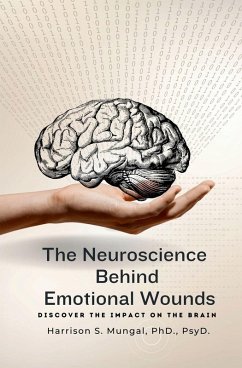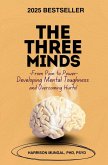Emotional wounds have a profound impact on brain function, shaping thoughts, behaviors, and emotional responses. Neuroscience shows that trauma alters key regions of the brain, including the amygdala, hippocampus, and prefrontal cortex. The amygdala becomes hyperactive, heightening fear responses, while the hippocampus weakens, making it difficult to separate past trauma from present experiences. The prefrontal cortex, responsible for emotional regulation and rational thought, often functions less effectively, reinforcing negative thought patterns and distress. Healing from emotional wounds requires rewiring the brain through neuroplasticity-the brain's ability to reorganize and create new neural pathways. Just as the brain "washes" itself of harmful associations, therapeutic practices such as cognitive behavioral therapy, mindfulness, and exposure therapy help establish healthier connections. These techniques counteract trauma's effects, promoting resilience and emotional stability. When emotional wounds occur, the brain undergoes physiological changes, particularly in regions associated with fear, memory, and emotional processing. The amygdala, the brain's threat detection center, becomes hyperactive, leading to heightened sensitivity to perceived danger and emotional triggers. Simultaneously, the hippocampus, responsible for processing memories, may weaken, causing difficulties in distinguishing past trauma from present experiences. This results in increased anxiety, impulsivity, and difficulty forming secure relationships. The prefrontal cortex, which governs rational thought and emotional regulation, often becomes underactive, impairing the ability to process distress effectively and reinforcing negative thought patterns. The concept of "washing the brain" in neuroscience refers to the brain's ability to cleanse itself from harmful associations and maladaptive responses through neuroplasticity-the brain's capability to reorganize and heal itself. Therapeutic interventions, such as mindfulness, cognitive behavioral therapy, and trauma-informed approaches, promote neuroplasticity by helping the brain establish healthier neural connections. Emotional wounds are not irreversible; rather, the brain has the ability to rewire itself, forming new patterns that enhance resilience, emotional regulation, and self-awareness. Rewiring the brain requires conscious effort in reshaping thoughts and behaviors. Exposure therapy, meditation, journaling, and deep emotional processing can diminish the effects of trauma by strengthening adaptive neural circuits. Practices that promote self-compassion and positive emotional experiences stimulate the release of neurotransmitters such as dopamine and serotonin, fostering emotional stability and cognitive flexibility. Just as physical wounds require treatment to heal, emotional wounds necessitate intentional healing strategies that guide the brain toward recovery. Understanding the neuroscience behind emotional wounds highlights the profound impact of psychological trauma on brain function while also offering hope for transformation. By applying evidence-based approaches that facilitate healing, individuals can rewire their brains, develop resilience, and cultivate emotional well-being. The intersection of neuroscience and psychology demonstrates that emotional wounds are not permanent limitations but opportunities for growth and renewal. This perspective shifts the narrative from suffering to empowerment, affirming that the brain possesses an innate ability to heal itself when nurtured through intentional therapeutic practices. Let me know if you need further refinements!
Bitte wählen Sie Ihr Anliegen aus.
Rechnungen
Retourenschein anfordern
Bestellstatus
Storno








